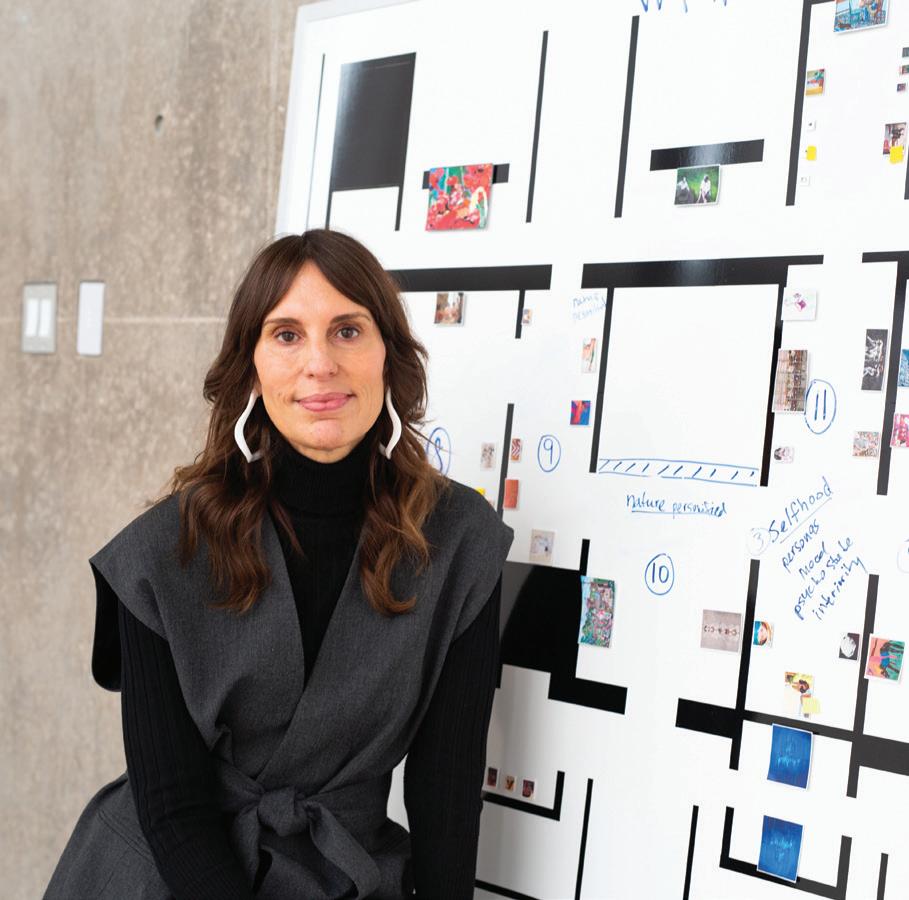
4 minute read
ART CURATOR
from OTK Issue 04
by One To Know
An Art Curator’s Journey
The Power of Art and Representation
Advertisement
By Sarah Langer
Andrea Karnes began working at the Modern Art Museum in Fort Worth as a receptionist in 1998 and has since touched every pulse of the museum’s heartbeat.
While her job description then may have been to answer phones, the museum did not have the support staff back then that they do now. So, Andrea quickly found herself doing budgets, assisting the business manager, aiding the registrar and helping the curator.
“I always tell young people who I talk to, especially those majoring in art history, that you’ve got to be willing to do anything in the beginning. You know, don’t stick to your job description, be willing to help people, be willing to do whatever it takes so you can figure out what you really love and the path to get there,” Andrea says.
As her career evolved from the receptionist to research assistant and then registrar, Andrea discovered what she really loved: curation. She wanted to be able to give artists a platform because of the way they mirror important issues. “Artists who are working today are making work that usually is direct commentary on what’s happening in the world — historically, politically, and in pop culture today,” she says.
As an advocate for artists with a pioneering spirit and someone who is paying attention to the world, it is only fitting that her first exhibit as chief curator is titled “Women Painting Women.”
On May 15, this exhibition, international in scope, will feature the brave female pioneers of figurative painting from the 1960s into the 21st century.
Andrea says nude painting was a white, maledominated field for most of history. That is until the female forerunners of figurative painting carved out a voice for themselves and began creating the art they desired to make, starting around the 1960s.

Somaya Critchlow Untitled (Pink Hair), 2019 Oil on linen 10 x 8 1/4 inches Isabella Wolfson Townsley, London © Somaya Critchlow

Because female pioneers of figurative painting fearlessly protested in front of art museums and advocated for female representation of the female body, we now get to experience pieces of art like Alice Neel’s “Pregnant Nude, 1967,” with a “realness that is too profound to be sexy,” according to a press release by the museum.
“It’s not a political exhibition, but it seems like the personal is political, and representation is always political,” Andrea says. “It seemed like a good moment to recognize issues of race and gender. You know, even the term ‘woman’ right now is being contested and taken out of its binary terms and opening up to be more inclusive to those who are femme-identifying.”
Several women were underrecognized in the canon of art history, which was doubled for women of color. With portraiture being a medium so accessible to view compared to other things that might feel intimidating in a museum, Andrea felt the time was right to celebrate women artists.
Arpita Singh My Mother, 1993 Oil on canvas 54 x 72 inches From the Collection of Sharad and Mahinder Tak © Arpita Singh
- TIFFANY WOLF, Modern Art Museum assistant currator of education
Featured artists such as Faith Ringgold and Emma Amos began painting women of color, including themselves when no one else was in the 1960s. Mickalene Thomas’ 2007, “A Little Taste Outside of Love,” provides an archetype to Jean-Auguste-Dominique Ingres, 1814, “Le Grande Odalisque,” as a motif of nuance and lure, by placing a woman of color in an identical pose. “Her stare is more at ease than the demure of ‘Odalisque,’ and she has ownership of her body and her surroundings,” Modern Art Museum assistant curator of education Tiffany Wolf, says.
For Andrea, the real adrenaline kicks in as the 60 pieces of art are unpacked and ready to be hung on the bare walls of the museum. With the goal in mind to make each piece of work sing in whatever space it’s placed, she believes there will be something so powerful for all women to find representation and inspiration while exploring the “Women Painting Women” exhibition.
“Little girls that want to be artists can walk into an exhibition and see not only other women who are doing it but also kind of be overwhelmed by it,” Tiffany says. “The scale of some of these are larger than life. The representation is clearly going to be there not only in who is identifying as the woman, but in the color of their skin, their familial relationships, and their ease within their body.”
Andrea’s career journey is riddled with the power of curiosity and willingness and has given her eyes to see the importance of showing different parts of the community, and in this case, especially young women who may have an interest in becoming artists, a path that other people have taken to get to where they are today.
From the Modern Art Museum’s receptionist to the chief curator, Andrea is an exemplary conduit contouring the evocative art of diverse female artists in a manner that is sure to inspire Fort Worthians as the “Women Painting Women” exhibit comes to life.

Amy Sherald A Midsummer Afternoon Dream, 2020 Oil on canvas, 106 x 101 inches Private collection © Amy Sherald. Courtesy the Artist and Hauser & Wirth









